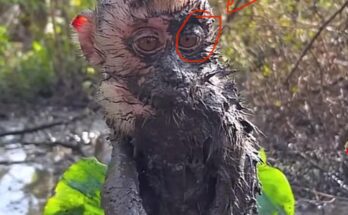
That’s when the idea was born: create a controlled, semi-natural space that mimics the complexity of wild environments while allowing for gradual social reintegration. And so, the blueprint for the Primate Socializing Habitat was drawn.
At first glance, the construction site appeared simple—fenced boundaries, scaffolded posts, and trenches being dug. But the design was rooted in cutting-edge behavioral science. The habitat would feature multiple “zones,” each with its own purpose. The introductory zone was for new arrivals—small, calm, and quiet, allowing the primate to observe others from a safe distance. Nearby, the interaction zone allowed visual and vocal contact without full physical access, helping individuals become familiar with one another before physical introduction.
Further along was the enrichment zone, filled with climbing structures, ropes, tunnels, water features, and hidden food puzzles. This area mimicked the challenges of life in the wild, encouraging play, exploration, and collaboration—key ingredients in forming social bonds. At the heart of the entire structure was the community zone, a large open space where fully integrated primates could interact freely as part of a growing troop.
Throughout the project, caregivers and volunteers worked tirelessly. Each log placed, each vine hung, and each shelter installed had a purpose. Shade structures allowed escape from heat, lookout towers provided security and vantage points, and nesting areas were nestled high in the trees for night-time safety.
One of the most anticipated features was the “mirror wall”—a reflective structure placed in the interaction zone. For many primates, seeing their own reflection stimulates curiosity, builds confidence, and prepares them for the unexpected presence of new faces. Cameras would also be installed discreetly to monitor behavior 24/7, allowing caretakers to track progress and adjust plans based on individual needs.
During the preview tour, staff members couldn’t hide their excitement. One longtime caretaker named Pich described it as “a dream come true for the primates and for us.” He added, “Some of these animals have never known what it means to feel safe around others. This space gives them that chance—for the first time or maybe a second chance.”
Even the youngest volunteers took part, painting climbing poles with non-toxic materials and preparing enrichment toys made from bamboo and recycled materials. For them, it wasn’t just about helping animals—it was about restoring trust, one primate at a time.
As the sun set over the half-built habitat, the forest around it came alive with the sounds of nature. Somewhere nearby, rescued macaques peered curiously from their temporary shelters, unaware that a whole new world was being built just for them—a world of play, learning, and belonging.
The habitat’s official opening was still weeks away, but already, hope hung in the air like the scent of ripe fruit. The primate socializing habitat wasn’t just a structure. It was a symbol of compassion, science, and the deep understanding that no primate—not even the smallest—should live a life of loneliness.


